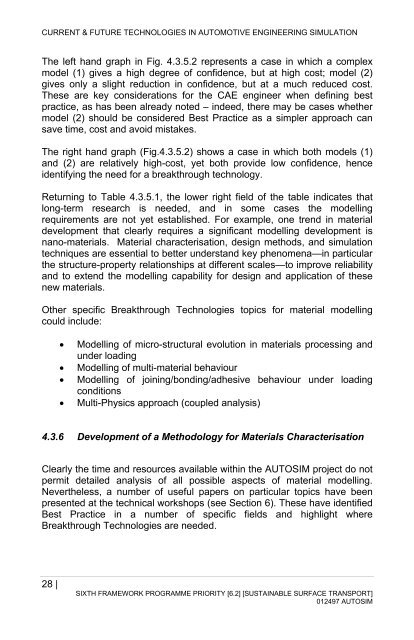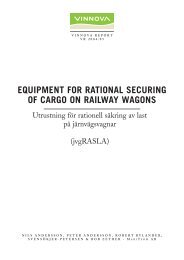Download - Autosim Autosim
Download - Autosim Autosim
Download - Autosim Autosim
You also want an ePaper? Increase the reach of your titles
YUMPU automatically turns print PDFs into web optimized ePapers that Google loves.
CURRENT & FUTURE TECHNOLOGIES IN AUTOMOTIVE ENGINEERING SIMULATION<br />
The left hand graph in Fig. 4.3.5.2 represents a case in which a complex<br />
model (1) gives a high degree of confidence, but at high cost; model (2)<br />
gives only a slight reduction in confidence, but at a much reduced cost.<br />
These are key considerations for the CAE engineer when defining best<br />
practice, as has been already noted – indeed, there may be cases whether<br />
model (2) should be considered Best Practice as a simpler approach can<br />
save time, cost and avoid mistakes.<br />
The right hand graph (Fig.4.3.5.2) shows a case in which both models (1)<br />
and (2) are relatively high-cost, yet both provide low confidence, hence<br />
identifying the need for a breakthrough technology.<br />
Returning to Table 4.3.5.1, the lower right field of the table indicates that<br />
long-term research is needed, and in some cases the modelling<br />
requirements are not yet established. For example, one trend in material<br />
development that clearly requires a significant modelling development is<br />
nano-materials. Material characterisation, design methods, and simulation<br />
techniques are essential to better understand key phenomena—in particular<br />
the structure-property relationships at different scales—to improve reliability<br />
and to extend the modelling capability for design and application of these<br />
new materials.<br />
Other specific Breakthrough Technologies topics for material modelling<br />
could include:<br />
• Modelling of micro-structural evolution in materials processing and<br />
under loading<br />
• Modelling of multi-material behaviour<br />
• Modelling of joining/bonding/adhesive behaviour under loading<br />
conditions<br />
• Multi-Physics approach (coupled analysis)<br />
4.3.6 Development of a Methodology for Materials Characterisation<br />
Clearly the time and resources available within the AUTOSIM project do not<br />
permit detailed analysis of all possible aspects of material modelling.<br />
Nevertheless, a number of useful papers on particular topics have been<br />
presented at the technical workshops (see Section 6). These have identified<br />
Best Practice in a number of specific fields and highlight where<br />
Breakthrough Technologies are needed.<br />
28 |<br />
SIXTH FRAMEWORK PROGRAMME PRIORITY [6.2] [SUSTAINABLE SURFACE TRANSPORT]<br />
012497 AUTOSIM
















